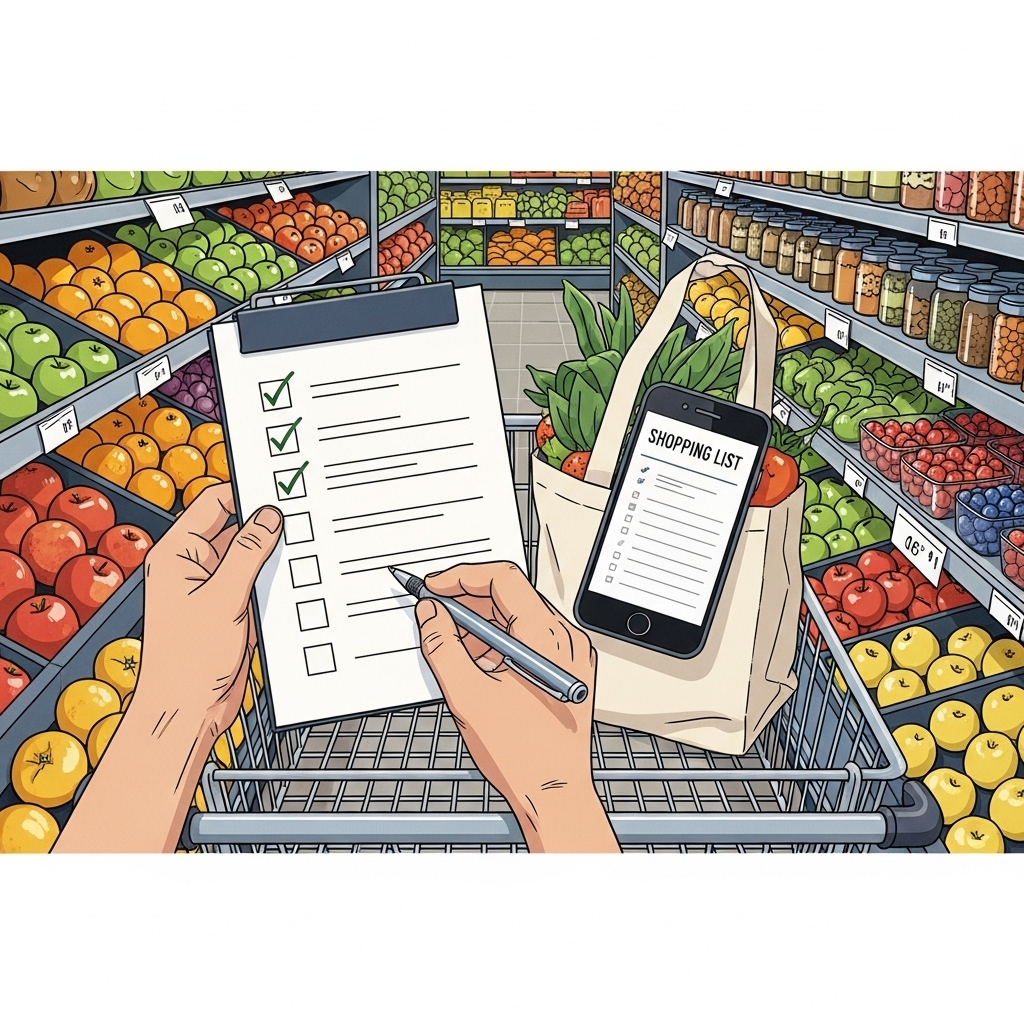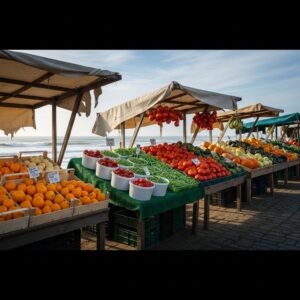Creating a thoughtful checklist before you visit an international market in Naperville can transform your shopping trip from overwhelming to inspiring. With so many spices, sauces, and unfamiliar labels, having a clear plan helps you discover new flavors and stay focused on what you need. As you build your plan for the week, get an early look at rotating specials and highlighted items by browsing local weekly deals, then tailor your checklist to ingredients that are fresh and in season.
This guide gives you a comprehensive checklist you can adapt for any global cuisine. It balances pantry staples, fresh produce, proteins, and freezer-friendly items with kitchen tools and best practices for storing what you bring home. Use the lists as a flexible template: add your family favorites, remove anything you do not need, and leave a little space for a discovery item each trip.
Pre-Trip Planning
- Pick two to four recipes you want to cook this week.
- Scan your pantry for rice, noodles, oils, vinegars, and canned goods to avoid duplicates.
- Check the spice cabinet and note which core items need refills.
- Plan a produce theme around herbs, greens, and one new vegetable to try.
- Set aside reusable bags, small containers for bulk items, and a cooler bag for perishables.
- Note any dietary preferences and substitutions so you can read labels quickly.
Produce Checklist
- Leafy greens for stir-fries, stews, and salads.
- Fresh herbs such as cilantro, basil varieties, mint, dill, and parsley.
- Aromatics like garlic, ginger, lemongrass, scallions, and onions.
- Root vegetables including daikon, taro, yucca, and potatoes.
- Tropical and seasonal fruits such as mangoes, papayas, dragon fruit, and citrus.
- Chilies ranging from mild to hot for salsas and sautés.
- Tomatoes, cucumbers, and peppers for fresh salads and pickles.
Pantry Staples by Cuisine
Use these groupings to curate a focused basket. Pick a cuisine for the week or mix and match for variety.
- Mediterranean: Olive oil, olives, bulgur, couscous, chickpeas, tahini, herbs like oregano.
- South Asian: Basmati rice, lentils (toor, masoor, moong), ghee or neutral oil, garam masala, turmeric, cumin.
- East Asian: Jasmine rice, soy sauce, rice vinegar, sesame oil, miso, dried mushrooms, seaweed, chili paste.
- Latin American: Masa harina, black beans, pinto beans, achiote, adobo blends, dried chilies, salsa bases.
- Middle Eastern: Pomegranate molasses, sumac, za’atar, freekeh, bulgur, tahini, pickled vegetables.
- Eastern European: Buckwheat, sauerkraut, pickles, paprika blends, rye crackers, preserves.
- African: Teff, berbere, peri-peri seasonings, palm or neutral oils, grains for porridge or stews.
Proteins and Seafood
- Butcher counter items cut for stir-fries, braises, or grilling.
- Marinated options for busy nights.
- Seafood varieties: whole fish, fillets, shrimp, and shellfish for soups, curries, and roasts.
- Tofu, tempeh, and bean curd skins for vegetarian meals.
- Eggs, dairy, or dairy alternatives as needed.
Freezer and Refrigerated Items
- Dumplings, buns, and savory pastries for appetizers or quick meals.
- Flatbreads such as roti, paratha, or other regional breads.
- Ready-to-cook items for weeknights.
- Frozen fruits and vegetables for smoothies and stir-fries.
- Fresh noodles, specialty dairy, and cultured products.
Condiments and Flavor Builders
- Soy sauces, tamari, and specialty vinegars.
- Chili pastes, sambal, gochujang, harissa, and curry pastes.
- Pomegranate molasses, date syrup, and honey alternatives.
- Fermented items: kimchi, pickled radishes, olives, and preserved lemons.
- Broths and stocks to anchor soups and stews.
Spice Refills
- Whole seeds: cumin, coriander, fennel, mustard.
- Ground spices: turmeric, paprika, cinnamon, cardamom.
- Blends: garam masala, berbere, ras el hanout, adobo, five spice.
- Dried herbs: oregano, thyme, mint, dill.
- Specialty salts and peppercorn varieties.
Snacks and Sweets
- Chips, puffed mixes, and crackers from different regions.
- Sesame candies, halva, and nougat-style sweets.
- Biscuits and wafer cookies for tea time.
- Dried fruit and nut blends.
Baking and Beverage Corner
- Flours: chickpea, rice, buckwheat, rye.
- Leaveners: baking powder and yeast for breads and pastries.
- Teas and coffee styles from different traditions.
- Cocoa powders and dessert toppings.
Kitchen Tools That Help
- Rice cooker and strainer for grains and noodles.
- Mortar and pestle or spice grinder for fresh blends.
- Steamer basket for dumplings and vegetables.
- Cast-iron or carbon steel pan for high-heat searing.
- Storage containers for batch cooking and leftovers.
Label Literacy
International products often include multiple languages. Identify the product name, suggested uses, and any preparation notes. If you find two similar items, compare ingredients to spot differences in sweetness, heat, or fermentation. For spice blends, read if they are salt-free to adjust seasoning. For pastes and concentrates, check if they require dilution or can be used directly in cooking.
Sample Weekly Menu Template
- Stir-fry night: greens, aromatics, protein, noodles or rice, savory sauce.
- Soup or curry night: base broth, vegetables, spice blend, protein or legumes, herbs.
- Roast night: seasoned vegetables and a simple marinade, grain or flatbread on the side.
- Small plates night: dips, olives, pickles, breads, and a salad.
- Freezer night: dumplings or buns with a quick vegetable stir-fry.
Midweek Market Strategy
Consider splitting your shopping into two smaller trips to keep produce at peak freshness. This also gives you a chance to adjust your plan if a recipe is a hit and you want to repeat it. Midweek visits can be calmer, and you might notice items you missed the first time. To stay aligned with what is highlighted in-store, glance over local weekly deals and see if a new sauce, noodle, or vegetable sparks a fresh idea for dinner.
How to Choose Between Similar Products
When faced with multiple brands of the same ingredient, use three criteria: flavor profile (read the ingredient order), traditional usage (which cuisine or dish it supports), and format (paste, powder, whole). If possible, start with the simplest ingredient list to learn the base flavor, then explore more complex versions later. Keep a small notebook or phone notes to track which you enjoyed and how you used them.
Storing Your Haul
Divide large purchases into smaller portions when you get home. Label containers with names and dates. Store spices away from heat and light. Keep herbs in water like a bouquet with a loose cover in the refrigerator. Freeze what you will not use within a few days—especially proteins and breads. This helps you reduce waste and keeps your pantry ready for spontaneous cooking.
Entertaining With Confidence
When hosting, rely on the market’s prepared or ready-to-cook sections for appetizers, then build a main meal around a showcase dish. Offer a variety of textures—something fresh and crunchy, something creamy, something warm and savory—so guests can create balanced plates. Label dishes for spice levels and common allergens to help everyone enjoy the spread.
Frequently Asked Questions
Q: How do I avoid buying too much when everything looks interesting?
A: Stick to your checklist for core items and allow yourself one or two discovery items. This keeps the trip exciting without overfilling your pantry.
Q: What if I cannot find a recipe ingredient?
A: Ask staff for a substitution. Many cuisines share similar ingredients under different names, or there may be a close alternative that works beautifully.
Q: How do I handle unfamiliar spice heat levels?
A: Start small, taste as you cook, and adjust. You can always add more heat but it is hard to remove it once added.
Q: Are there good options for quick weeknight meals?
A: Yes. Frozen dumplings, marinated proteins, and ready-made flatbreads help you assemble a satisfying dinner quickly.
Q: How do I keep herbs fresh longer?
A: Trim stems, place herbs in water like flowers, and loosely cover. Change the water every couple of days.
Q: Can I shop for special dietary needs?
A: Many international ingredients are naturally aligned with vegetarian, dairy-free, or gluten-conscious cooking. Always read labels and ask questions as needed.
Bring Your Checklist to Life
Print your list or keep it on your phone. As you browse the aisles, be open to swaps when inspiration strikes. When you are ready to plan your next market run and align your menu with what is highlighted locally, take a quick look at weekly deals, then head to the store prepared and excited to cook something new.




